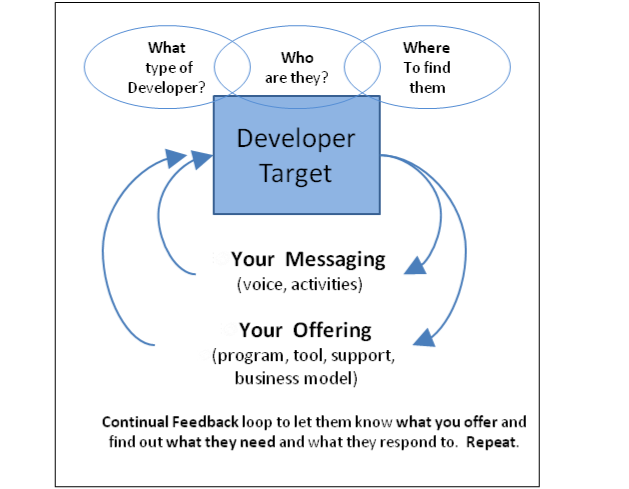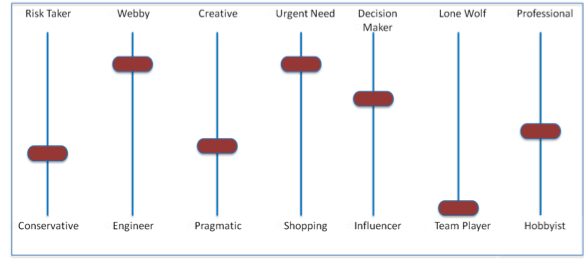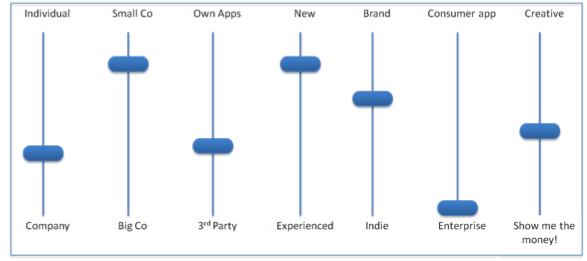Developer Segmentation
- WIP
- Sep 18, 2014
- 4 min read
(Content was originally published September 2011 in the WIP Factory Report on Developer Programs.)
We’re looking for developers; can you help us find them?
We get asked this question a lot, but before we get started we need to first figure out what you really mean by ‘developer’ and the type of developer that is best suited to your program. This brings us to the topic of segmentation of mobile developers. It is crucial you have a clear view of which segment to target given the vast number and striation of the developer community and the intense competition for them.
Typical Segments
The developer segmentation typically starts with:
the type of mobile platform they work on (ie: iPhone, Android, Symbian, HTML5, etc)
the type of application genre (social, games, enterprise, health etc)
and the physical location (Silicon Valley, London, China, India etc)
These are definitely important to look at, and indeed cross fertilizing your group with those who bring different views and experience to the mix can be important to get diverse opinions and new creativity. However, to focus your messaging and offering requires a deeper look.
Narrowing down the segment depends on your specific offering, as different programs, tools, APIs, platforms etc. appeal to different groups. Narrowing your segment will also determine the types of messaging you can deliver and what developers will respond to (See Diagram #1).
Is it easy? Developers are hard to pin down given they are both companies and individuals. So as you develop your messaging and offering, you need to review both sides of the coin.

Diagram #1
Definition of Developer
We like to caution on the use and definition of the term ‘developer’. This has changed over the last several years, as the types of developers have striated and the numbers of developers has exploded. Traditionally a mobile developer was a real 'techy', educated first as electrical engineers who needed to know the all the nuances of working with wireless spectrum. Then the computer software engineers came along; and now mobile development is also the purview of web designers and content creators who bring a different perspective and different skills to this dynamic industry.
WIP published the WHO IS A MOBILE DEVELOPER diagram in June of 2008, when we realized that the mobile developer definition was striating further; and the notion of them just being the 'techies' was no longer working. The definition wasn't working as it lacked the respect from the upper echelons of the mobile ecosystem; it didn't represent the multiple hats many of the technical people wear in a start up; nor did it include the new comers who were embracing the mobile web.
Developer now typically means a company that develops applications (also platforms/devices). The individuals who spend time developing are the coders. Many programs and event organizers get caught up with Job Titles to determine who is and who is not a developer. This approach is not very helpful when you consider that some companies we have seen list over 30 job titles to describe ‘developers’. Indeed, we also find that the CEO in a start-up, in addition to administration and marketing duties, must also code and make product development decisions – a key target you would not want to ignore just because his title doesn’t infer a ‘developer’.
Developers as Individuals
When looking at developers as individuals, segmentation looks at their behavior, experience and personality traits. Developers are easily described as today’s da Vinci’s for their creativity and problem solving skills. A large majority also have a lone wolf mentality so can be a challenge to work with. They work long hours and often at night, which influences the type of support your program should provide so they can access it on their terms and easily – “I need an answer right now and quickly”.
Experience level is also an important factor to keep in mind. The growth in mobile developers has exploded since the iPhone. Given the iPhone has only been around for 4 years, most of these developers have an average of 18 months to 2 years of experience and they are still learning all of the possibilities of mobile. They also have little knowledge of the nuances of wireless; that spectrum is precious, battery consumption is serious, and latency is real.
Given they are individuals; they also have product loyalties and the desire to be treated with respect and turned into a hero.
The diagram below and left with the red buttons shows a few characteristics of individual developers, and how you may choose to distinguish your segment on a sliding scale.
Developers as Companies
Companies who develop mobile applications come to the table in various forms, but the biggest characteristic is whether they need to find a market or already have one. Typically Brands and Enterprise software companies already know their customers; they are looking to mobile to enhance their reputation or offering. So they don’t need your app store or customer, they do need to understand the technical challenges and business models associated with your offering.
An important segment to keep in mind here are companies who develop applications for others. This segment is growing both domestically and offshore.
The diagram below and right (blue buttons) shows a few characteristics of development companies.
How many mobile developers are there?
Do you want to know numbers of individuals or numbers of companies? In 2008 WIP estimated there were over 100,000 mobile development companies worldwide. Evans Data estimated the number of mobile developers was 6 million, and anticipated that number to grow to 19 million by 2010, a number that is still widely cited.
Does it really matter? Not really. We know that there are millions, and the number will continue to grow as the demand for mobile grows in all parts of the world. It is more important to know the segment you are targeting and where to find them. And as we have shown a single traditional segmentation method will rarely bring good results. Where to find developers will be a topic for another blog.


Tagged: #developer, #DeveloperPrograms, #segmentation

Comments